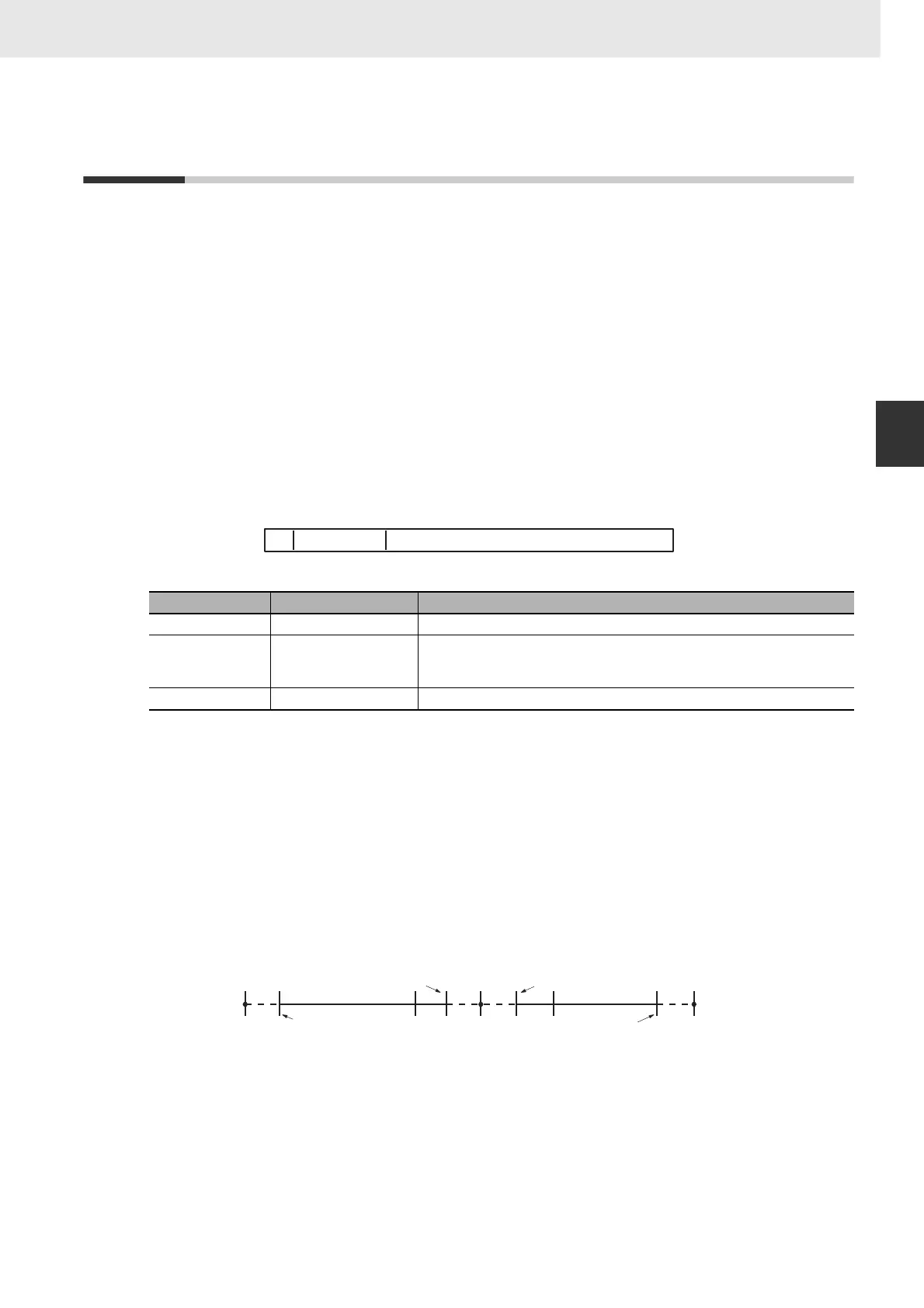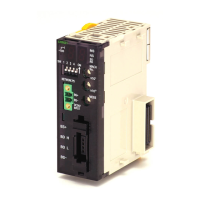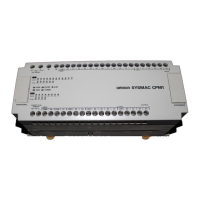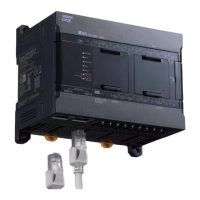467
3. Instructions
CS/CJ/NSJ Series Instructions Reference Manual (W474)
Floating-point Math Instructions
3
Floating-point Math Instructions
Floating-point Math Instructions
Floating-point Math Instructions
The Floating-point Math Instructions convert data and perform floating-point arithmetic operations.
z Data Format
Floating-point data expresses real numbers using a sign, exponent, and mantissa. When data is
expressed in floating-point format, the following formula applies.
Real number = (–1)
s
2
e–127
(1.f)
s: Sign
e: Exponent
f: Mantissa
The floating-point data format conforms to the IEEE754 standards. Data is expressed in 32 bits, as
follows:
z Number of Digits
The number of effective digits for floating-point data is seven digits for decimal.
z Floating-point Data
The following data can be expressed by floating-point data:
•–∞
• –3.402823 × 10
38
≤ value ≤ –1.175494 × 10
–38
•0
• 1.175494 × 10
–38
≤ value ≤ 3.402823 × 10
38
•+∞
• Not a number (NaN)
z Special Numbers
The formats for NaN, ±∞, and 0 are as follows:
• NaN*:e = 255, f ≠ 0
•+∞:e = 255, f = 0, s= 0
•–∞:e = 255, f = 0, s= 1
•0:e = 0
* NaN (not a number) is not a valid floating-point number. Executing floating-point calculation instructions will not
result in NaN.
Data No. of bits Contents
s: sign 1 0: positive; 1: negative
e: exponent 8 The exponent (e) value ranges from 0 to 255. The actual exponent is the
value remaining after 127 is subtracted from e, resulting in a range of
–127 to 128. “e=0” and “e=255” express special numbers.
f: mantissa 23 The mantissa portion of binary floating-point data fits the formal 2.0 > 1.f ≥1.0.
se f
31 30 23 22 0
Sign Exponent Mantissa
–1.175494 × 10
–38
1.175494 × 10
–38
– ∞
+
–3.402823 × 10
38
3.402823 × 10
38
– 1
0
1
∞

